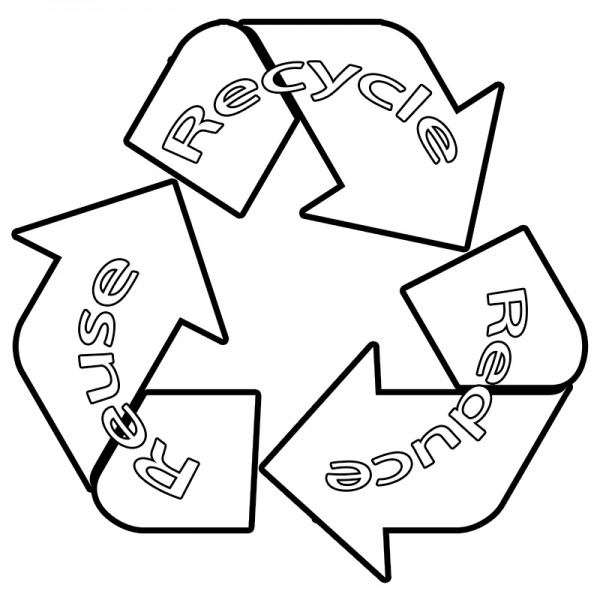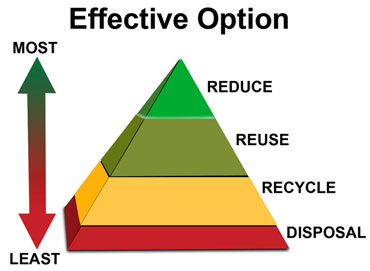I’m an environmentalist and I don’t like recycling.
Or, rather, I don’t like what recycling has become in the U.S. I still recycle as much as I can, and there’s a part of me that feels guilty every time I have to throw something into the trash versus the recycling bin. But that right there is why the current state of recycling upsets me:
The first factor is something I struggle with to this day. Despite being an environmental professional who deals with waste management and recycling topics, I still find myself needing to look up the recyclability of certain items. This is because recycling facilities (more accurately, Materials Recovery Facilities, or MRFs for short) throughout the country and across waste management companies vary by sorting technology and capacity. I’ve moved so often that my collective recycling habits have me on auto-pilot more than I’d like to admit. Unfortunately, something that was recyclable in one place may not be in another.
Before I became better versed in the world of MRFs, I assumed that anything with the recycling symbol was actually recyclable. By recycling as much as possible, I thought I was reducing my environmental impact, but I was really recycling too much. I learned that when you add something to a recycling bin that your designated facility cannot process, the facility’s efficiency is reduced, often adding contaminants into the recycling stream. The wrong things can fall through sifters, get caught in gears, and just generally mix in with the wrong material group. As MRFs only sort and sell recycled materials (plastic #1 to certain buyers, crushed glass to another, etc.), the contamination levels determine the facility’s recovery costs. If the sorted materials are too contaminated, the whole batch ends up going into the landfill.
I was horrified to think that I, an environmentalist by more than a few standards, could have contributed the proverbial straw that broke the camel’s back — that I contributed the contaminant that ruined a whole batch of recyclables.
After resolving to adopt better recycling practices, I also began to think about a second problem with recycling. Despite being the least environmentally friendly of the three Rs (reduce, reuse, and recycle), recycling is the most integrated into people’s everyday lives. It’s so prominent that it often overshadows the other two Rs.
I partially blame this image:

Seem familiar? They’re the three green arrows of recycling. Each arrow represents a distinct step of recycling (collection, manufacturing, and use). However, I admit that for a little while, I was fooled into thinking these three arrows represented the three Rs of Reduce, Reuse, and Recycle. It’s easy to see why. Three Rs. Three arrows. Bam. You get one of these lovely monstrosities of misinformation.

I’m pretty sure I did this as a coloring worksheet in grade school…
When I was younger, I also used to think that, because the arrows and the three Rs were equally sized and drawn in a balanced cycle, Reduce, Reuse, and Recycle were viewed as equal in their effectiveness. However, this is far from true. They’re not equal at all. The 3 Rs are usually verbally presented in that specific order for a reason; they read from most effective to least effective in terms of reducing environmental impact.
Reducing your consumption of disposable products and/or products with disposable packaging is the most effective option of all. Then, if you just had to buy the item, your next step would be to reuse it for something else after it is no longer useful for its original purpose. Lastly, if all else fails, recycle it and send it away for processing and redistribution.

This pyramid model puts the three Rs in order of effectiveness
As you can see, recycling is meant to be the last line of defense between your waste and a trip to the landfill or incinerator. However, the biggest issue with changing people’s affinity for recycling as their favorite “R” is the difficulty in changing purchasing behaviors. I remember when I used to justify certain purchases because part of the purchase was recyclable. These items often involved food items that came in recyclable plastic tubs. I subconsciously felt like recycling would offset the environmental impact of my purchase, despite the packaging’s disposable nature. In reality, recycling is not that powerful. Recycling can’t reach back in time and undo the environmental damage from the production, transportation, and distribution of our purchases. The air isn’t cleaned, aquifers aren’t replenished, and the land’s flora and fauna doesn’t teem with life the moment you recycle something. In fact, recycling barely makes up for the environmental impact caused by the recycling process itself.
With all that said, recycling does have its place and can give us another chance to make things right. For example, even environmentally conscious companies and individuals can’t always avoid using certain items like office paper. Therefore, purchasing paper with high post-consumer recycled content is a step in the right direction and is considered a part of recycling. And, of course, any used paper should eventually be recycled.
But here again, we should pay close attention to the other two Rs. To reduce in the workplace, we can set up our computers to print documents two-sided by default (we do this as part of the sustainability work at Highmark Health). To limit excessive printing practices, we can also encourage paperless communication, such as using laptops to share and view large documents during meetings or opting to receive digital utility bills instead of paper versions.
It’s also important not to limit the three Rs to the obvious areas like office paper. There are many other areas where companies and individuals alike can do more, especially in practicing the two most effective Rs. To name just a few, we can encourage the use of reusable take-out containers (for cafeterias and leftovers), donate excess materials to local materials reuse groups (like Pittsburgh Center for Creative Reuse), and reduce energy and water consumption by installing efficient fixtures (some of which are extremely cheap and easy to DIY).
I still appreciate and encourage recycling at work and at home. It does divert waste from going to landfills and incinerators, which is a step in the right direction. It has also proven to be easier to encourage people to recycle rather than to also reduce and reuse. The visual and physical measurability associated with a bin full of recyclables play into people’s competitive nature and need for immediate gratification. This makes it easier to foster further discussions about waste management.
But we shouldn’t settle for just recycling. So while I encourage everyone to celebrate events like America Recycles Day (November 15), I would also challenge us all to remember the following: Reduce, reuse, and then recycle.